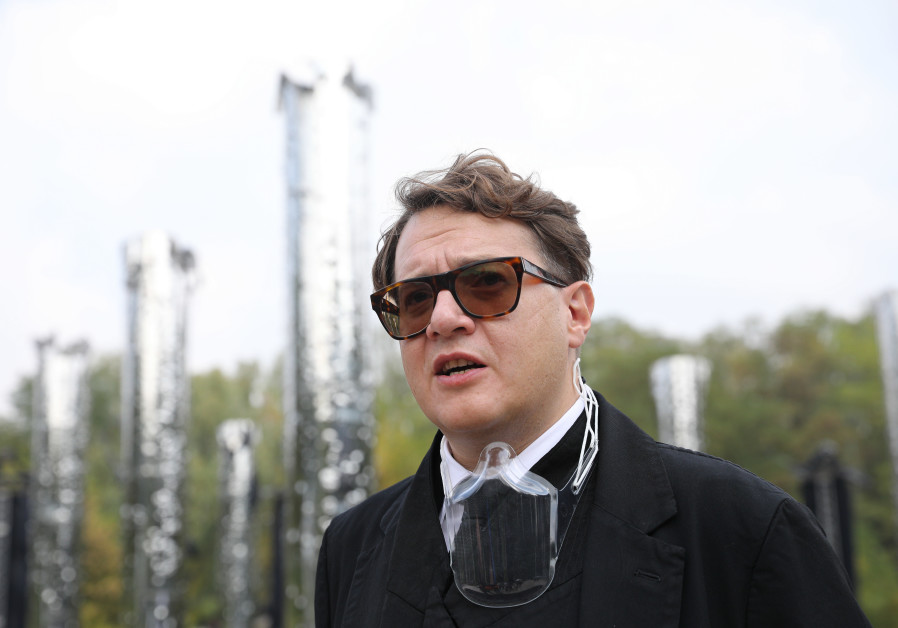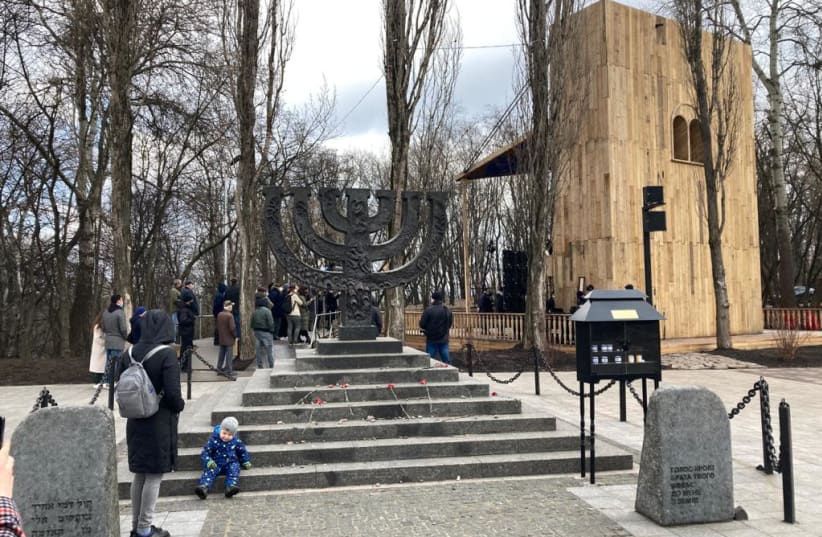Today, at this very moment, a synagogue will spring forth from the ground at Babyn Yar, the site where 33,771 Jews were murdered in a two-day period in late September 1941.The Babyn Yar Holocaust Memorial Center (BYHMC) will unveil the very first Jewish prayer space at Babyn Yar at a ceremony led by Rabbi Yaakov Dov Bleich, Chief Rabbi of Ukraine and Kyiv.“This spot was the place that the Germans thought would create a ‘Judenrein’ Kyiv – a city that would be ‘cleansed’ of its Jews,” said Rabbi Bleich. “The fact that we’re able to create a memorial here that symbolizes a synagogue shows the victory of the Jewish people over their oppressors.”He added that today’s generation has a tremendous responsibility to the victims of the Holocaust and the survivors to tell the story of the Holocaust to future generations. “We have to do whatever we can today to make sure that we put out concrete memorials that will tell the story.”
In accordance with current COVID-19 restrictions in Ukraine, Rabbi Bleich will dedicate the symbolic synagogue alongside nine other rabbis, forming a traditional prayer quorum of ten (a minyan), accompanied by Torah scrolls that survived the Holocaust.
The inauguration of the symbolic synagogue and prayer space at Babyn Yar will be part of today’s special broadcast on the Jerusalem Post website and Facebook page and the Babyn Yar Holocaust Memorial Center Facebook page at 1:00 PM EST, and 8:00 PM Israel and Kiev time.
Prior to the dedication, Rabbi Bleich will participate in a panel discussion with Ilya Khrzhanovsky, Artistic Director of the Babyn Yar Holocaust Museum, and architect Manuel Herz, designer of the unique synagogue about its significance and meaning.

Architect Herz noted that designing a synagogue for Babyn Yar was a difficult task.“Few places on this planet have seen more death, more murder, more devastation than Babyn Yar, and it obliged me to approach this project with incredible care and respect.”The symbolic synagogue takes its inspiration both from the pop-up book and from 17th and 18th-century wooden Ukrainian synagogues. When closed, the building is a flat structure that is manually opened, which then unfolds into the three-dimensional space of the synagogue structure. Herz said that his design combines the tragedies of the past with the hope of a better future.“I wanted to create a building that on the one hand, commemorates the incredibly devastating tragic past, but also points to a new future to bringing a living Jewry back to the site, and I wanted to do this in a way that is meaningful and significant, but can also open a new possible path, a new light, and maybe even a smile.”
Opening a prayer book or Bible in the synagogue, said Herz, “opens up a world of magic, of morals, and history,” and similarly, the pop-up metaphor expresses the opening and discovery of new worlds. The very fact that a group of people must mechanically open the pop-up synagogue, Herz noted, describes a type of togetherness and unity required in the future.
Ilya Khrzhanovsky, Artistic Director of the Babyn Yar Historical Museum, said that it was significant that the synagogue is the first building of the museum to be opened. “Eighty years after this massacre, there was almost nothing to remind the people who came here about this tragedy. There was no place where you can pray, where you can talk about something intimate and important about this killed, destroyed world.” He added that the synagogue is important for people of all backgrounds. “It can show the people who come in without knowing anything about Judaism about Jewish life in Ukraine before the Second World War. On the other hand, it’s a place where every Jewish person can come and pray.”
Khrzhanovsky added that the fact that the synagogue is being dedicated on Holocaust Remembrance Day is especially significant. “This connection with the country (Israel), which the people who were killed there never saw, adds another symbolic meaning.”

Rabbi Bleich mentioned the rebirth of Judaism in Ukraine in recent times, citing the Jewish day school movement as one of the main contributing factors in its resurgence. “We started with the children. Sunday school, day schools, bringing them back and educating them and teaching them about their heritage. This had an unbelievable ripple effect on their parents and the communities because that brought young people into the synagogues.” Recalling a time when the synagogue in Kyiv was empty of children, he said, “The only way we will have a future is if we get children into the synagogue.”
The symbolic synagogue in Babyn Yar will not house a living congregation of regular synagogue-goers, but it symbolizes the resurgence of Jewish life in Ukraine, said Rabbi Bleich, one in which its future is epitomized with the symbolic synagogue and prayer space which is being dedicated in Kyiv today.
